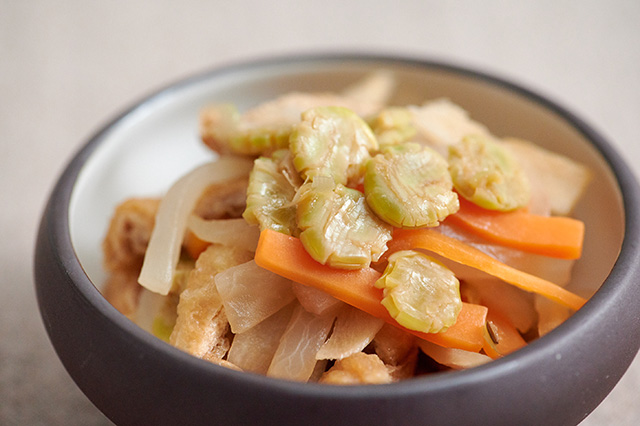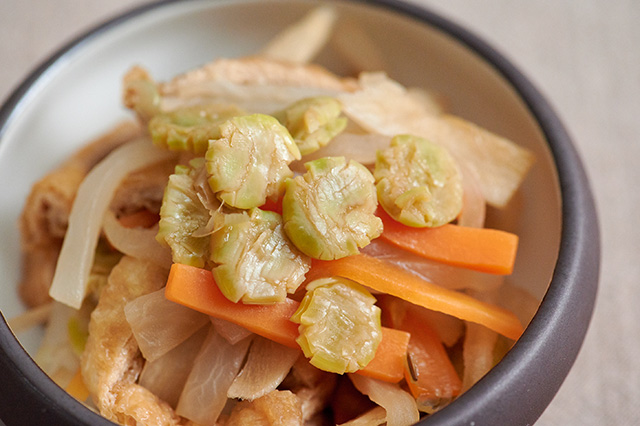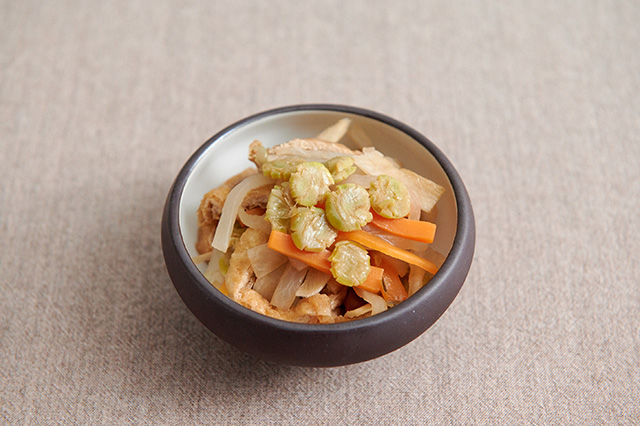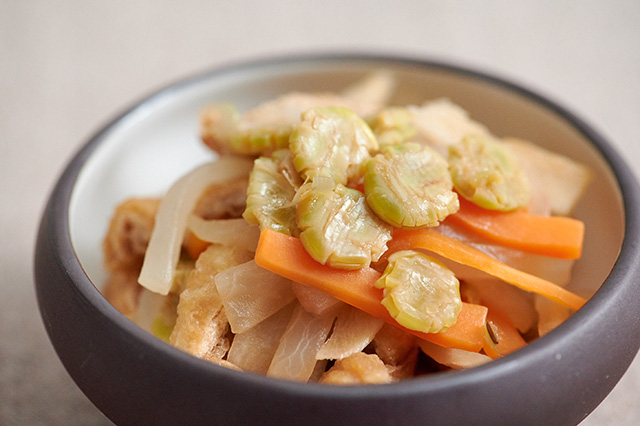Aimaze | Our Regional Cuisines
-
Ishikawa Prefecture
Aimaze
These images of local cuisine may not be downloaded.
-

Agree to the "Copyright" and download the image(ZIP:1,013KB)
-

Agree to the "Copyright" and download the image(ZIP:997KB)
-

Agree to the "Copyright" and download the image(ZIP:714KB)
-
Main lore areas
Noto area
-
Main ingredients used
Radish, carrot, burdock, shiitake mushroom, etc.
-
History/origin/related events
The Noto Peninsula is surrounded by the sea on three sides. The sticky soil, represented by red soil, gives the vegetables grown a unique flavor. The vegetables produced by taking advantage of this climate are branded as "Noto vegetables". They are categorized as "traditional Noto vegetables" or "Noto specialty vegetables" based on the criteria such as: they must have been cultivated for at least 30 years, have an organization such as a subcommittee, and be widely distributed to the public. About 20 varieties of crops, including Noto daikon (Japanese radish), Noto pumpkin, mikohara kuai (arrowhead), and kinshiuri (spaghetti squash), have been certified. The Noto region is blessed with a rich environment for vegetable cultivation, which has given rise to a variety of local dishes using local vegetables. One of them is "Aimaze". “Aimaze” is a traditional dish eaten mainly in the Noto region. It is a simmered dish made mainly of root vegetables such as daikons and carrots. The vegetables used are seasonal and locally grown, so they vary in appearance and taste. A wide range of arrangements have been made and passed on to the present day. This dish varies depending on the region.
-
Opportunities and times of eating habits
It is an indispensable dish for New Year's Day and other special occasions. For such special occasions, root vegetables such as daikon (Japanese radish) and carrots are shredded into small pieces and left to cook.
Nowadays, this dish is rarely made at home on a daily basis, but is often eaten on special occasions. It is often made in large quantities at one time during special events. -
How to eat
Cut various vegetables into 3 cm strips and roast them in a pot. When the ingredients have wilted to a certain degree, add soy sauce and sugar before eating. If fried bean curd or other ingredients are added, the vegetables soak up the flavor of the vegetables and the broth, making the dish even more delicious. In some cases, Noto vegetables are used as ingredients.
It is delicious hot, but can also be served cold. It is a dish that can be stored for a relatively long time, but nowadays it is usually eaten within two to three days due to changes in the storage environment, such as lighter seasoning and warmer temperatures than in the past. -
Efforts for Preservation and Succession
Since it is sometimes eaten at school lunches or in cooking classes, it is somewhat popular among a wide range of generations.
Recipe Arrangements
provider : Ishikawa Dietary Improvement Promotion Council
This recipe video has been partially arranged to make it easier to cook at home.
Contact
Food Cultures Office, Overseas Market Development and Food Cultures Division, Food Industry Affairs Bureau, Ministry of Agriculture, Forestry and Fisheries
Tel:+81-3-3502-5516






